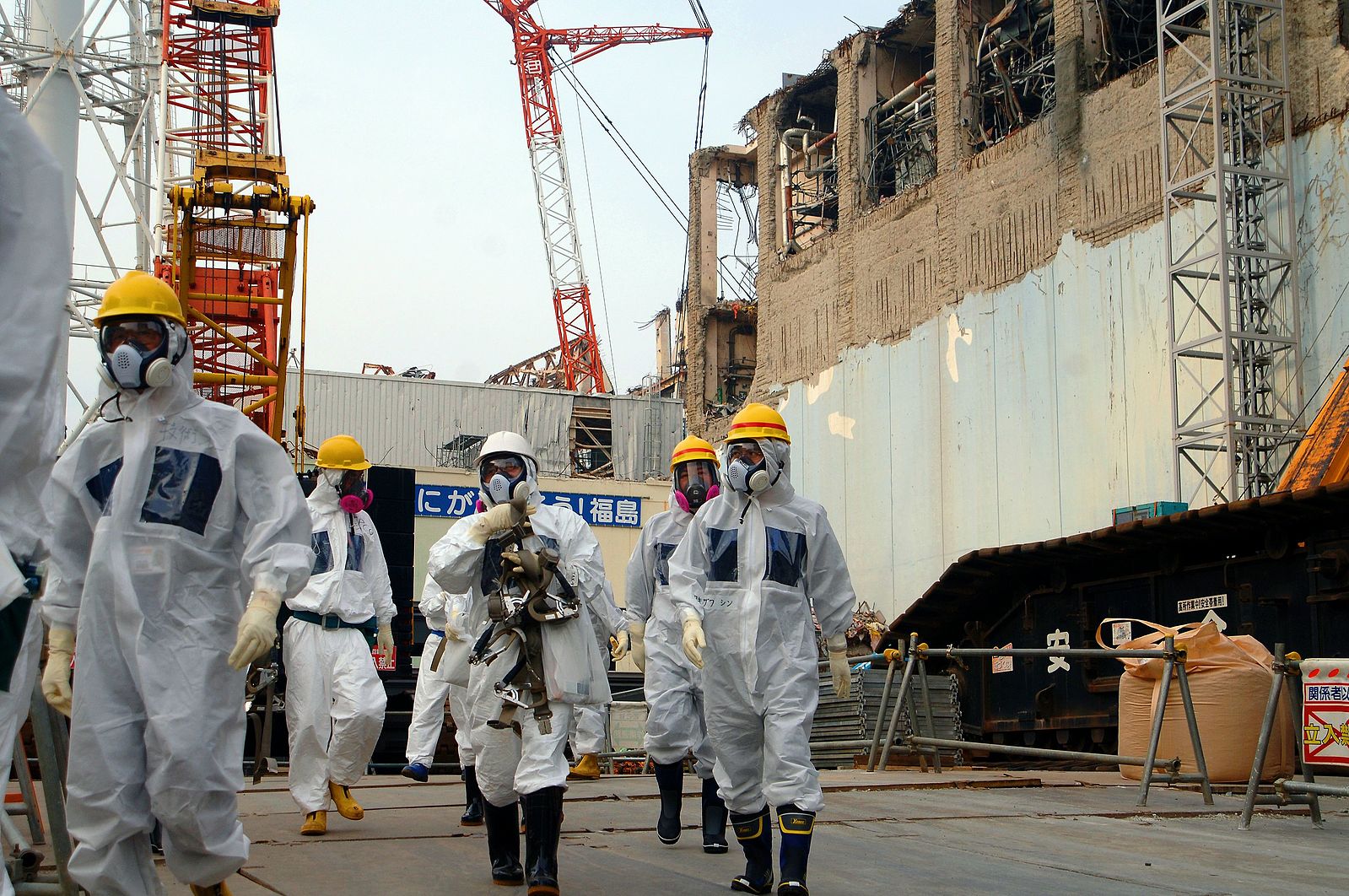By Rowenna Hoskin | Science Editor
Contaminated water from the Fukushima Daiichi nuclear power plant is reportedly set to be released into the Pacific Ocean. The water contains a reactive substance that has the potential to damage human DNA, says a Greenpeace investigation.
The investigation claims that 1.23m tonnes of water, stored in more than 1,000 tanks at the plant, contains ÔÇ£dangerousÔÇØ levels of the radioactive isotope carbon-14, in addition to quantities of tritium that have already been widely reported.┬á
Green peace published their investigative report, Stemming the Tide 2020: The reality of the Fukushima radioactive water crisis, shortly after the Japanese media reported that the government was close to giving its approval to release the water into the Pacific Ocean ÔÇô ignoring the objections from local fishermen who say that the move will destroy their livelihoods.┬á
ÔÇ£We cannot postpone the issue forever,ÔÇØ the prime minister, Yoshihide Suga, said this week. ÔÇ£We would like to make a decision responsibly as soon as possible.ÔÇØ┬á
The Fukushima Daiichi nuclear power plant had a triple meltdown on the 11 March 2011 after a powerful earthquake and tsunami sent large quantities of radiation into the atmosphere and forced the evacuation of over 150,000 residents. 
The water that is set to be released is the water that has been used to cool the plantÔÇÖs damaged reactors. The Japanese government and the plant operator, Tokyo Electric Power Company (Tepco) refer to this water as ÔÇ£treated waterÔÇØ and insinuate that it only contains Tritium, according to Greenpeace Japan and Greenpeace East Asia.┬á
Lots of the focus has been on tritium which cannot be removed by the on-site filtration system used by TEPCO. Little attention has been drawn towards the likelihood of carbon-14 being discharged despite the fact that this radioactive carbon is contained within the same stored water. 
Carbon-14 has a half life of 5,370 and becomes ÔÇ£incorporated into all living matterÔÇØ, the report said.┬á
While TepcoÔÇÖs advanced liquid processing system removed highly radioactive substances from the water but is unable to filter out tritium, a radioactive isotope of hydrogen that nuclear power plants usually dilute and dump along with water into the ocean.┬á
Greenpeace has said that it has confirmed with Tepco that the system was not designed to remove carbon-14, meaning that it will be present within the ÔÇ£treated waterÔÇØ.┬á
ÔÇ£Nearly 10 years after the start of the disaster, Tepco and the Japanese government are still covering up the scale of the crisis at Fukushima Daiichi,ÔÇØ said Shaun Burnie, author of the report and senior nuclear specialist with Greenpeace Germany.┬á
ÔÇ£They have deliberately held back for years detailed information on the radioactive material in the contaminated water. They have failed to explain to the citizens of Fuukushima, wider Japan and to neighboring countries such as South Korea and China that the contaminated water to be dumped into the Pacific ocean contains dangerous levels of carbon-14. These, together with other radionuclides in the water will remain hazardous for thousands of years with the potential to cause genetic damage. It’s one more reason why these plans have to be abandoned.ÔÇØ┬á
The decision on the waterÔÇÖs fate is expected to be announced by JapanÔÇÖs government next week. Media reports have said that the project would begin at the earliest in 2022 and take decades to complete. The water from Fukushima Daiichi will be diluted within the plant before it is released so that it is 40 times less concentrated, the Yomiuri Shimbun newspaper said.
The release of this contaminated water is pressured by the shrinking storage space available in the nuclear plant, Tepco estimating that all of the available tanks will be full by the middle of 2022. 
It appears that this decision to release ÔÇ£treated waterÔÇØ containing harmful, DNA damaging contaminants, is driven by money. While the water remains in the plant, valuable tanks are being made unusable and by consequence, the plant will be unable to store reactor water.┬á
Hopefully the Japanese government will change their mind and realise the disastrous effects this ‘treated water’ will have on a global level.
[mks_button size=”small” title=”Science and Technology” style=”squared” url=”https://cardiffstudentmedia.co.uk/gairrhydd/science-and-tech/” target=”_self” bg_color=”#109748″ txt_color=”#FFFFFF” icon=”” icon_type=”” nofollow=”0″] [mks_button size=”small” title=”Rowenna Hoskin” style=”squared” url=”https://cardiffstudentmedia.co.uk/gairrhydd/rowenna-hoskin/” target=”_self” bg_color=”#109748″ txt_color=”#FFFFFF” icon=”” icon_type=”” nofollow=”0″]







Add Comment